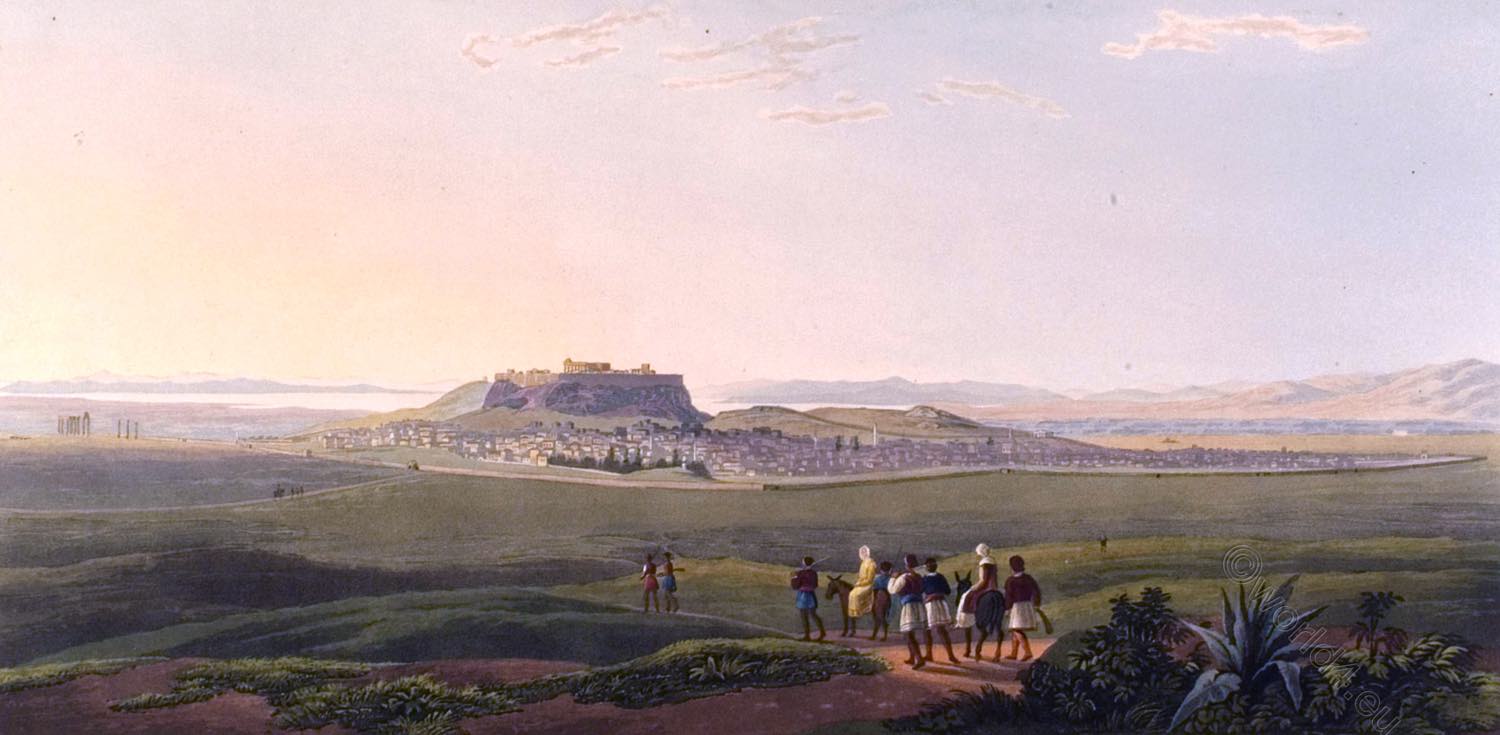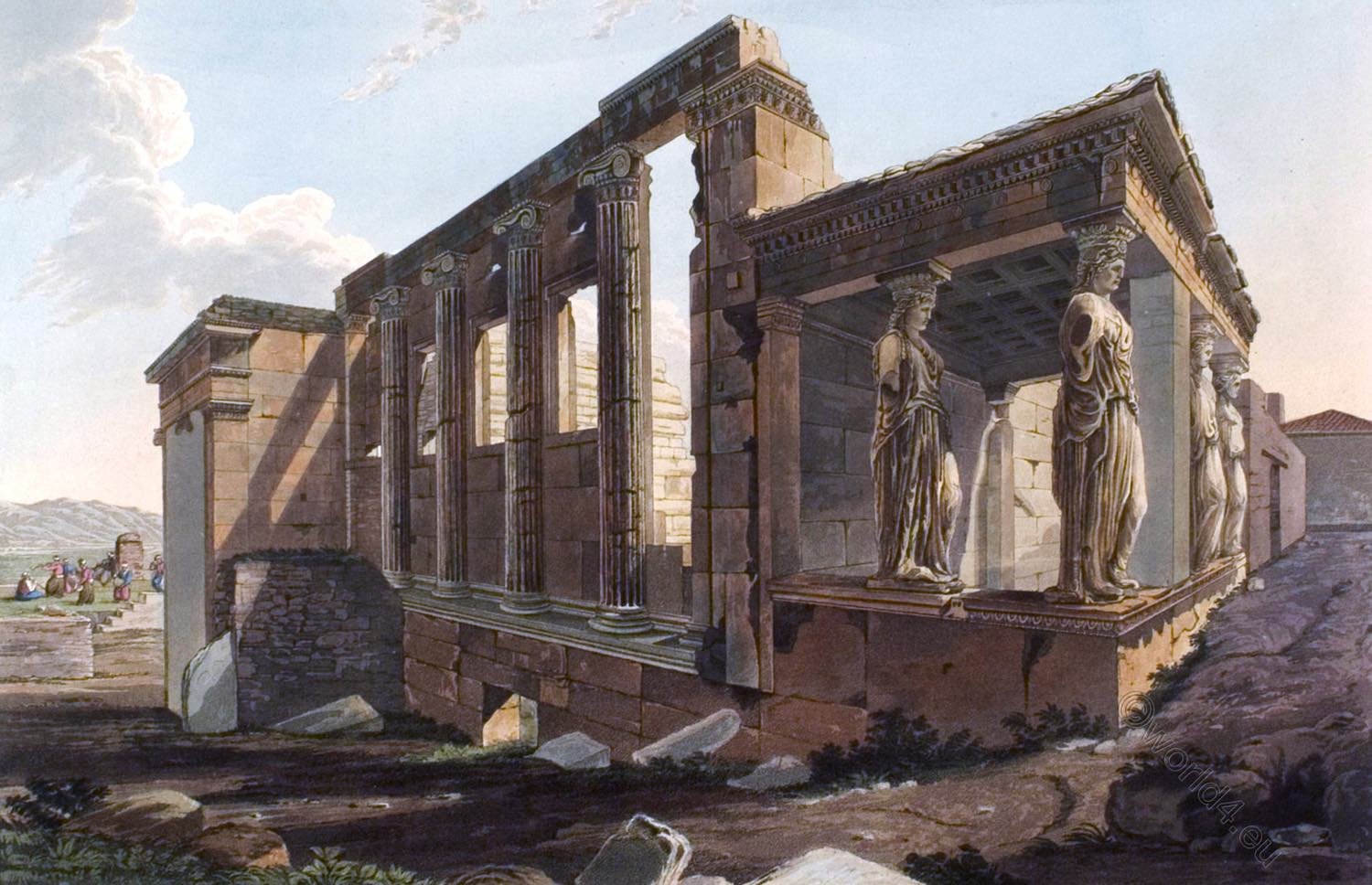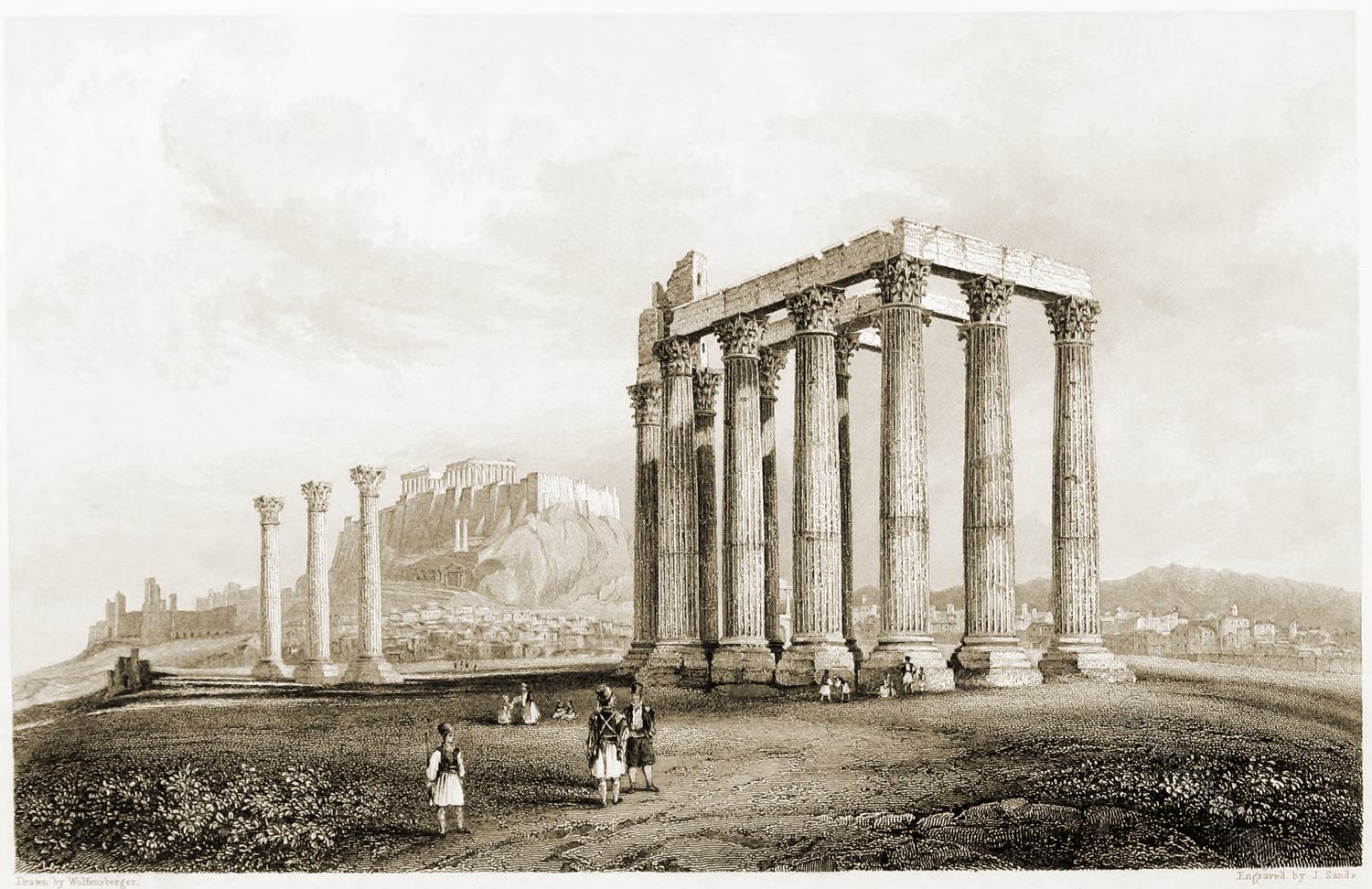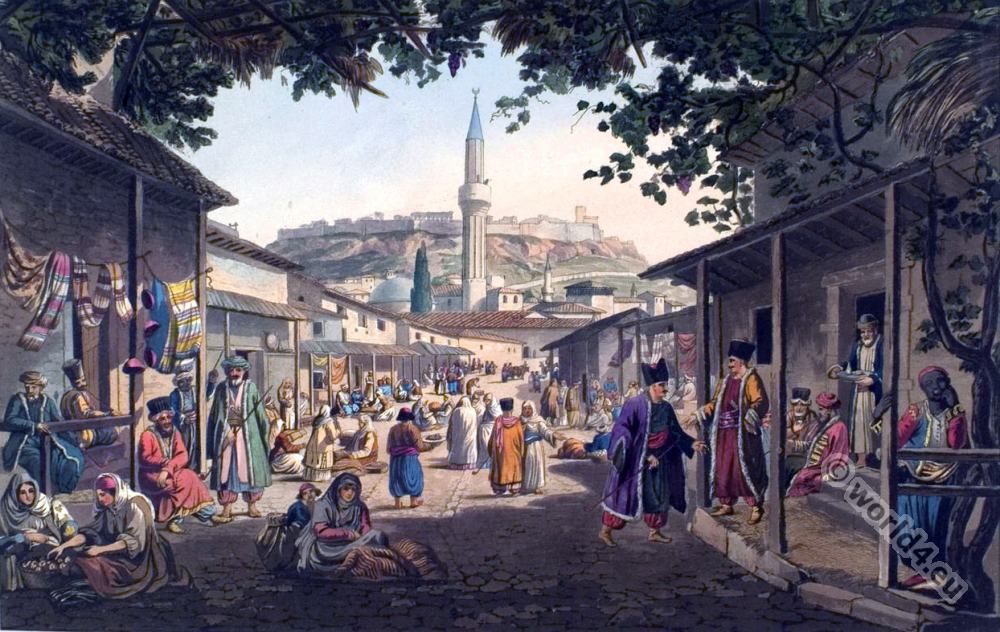The Choragic Monument of Lysicrates near the Acropolis of Athens was erected by the choregos Lysicrates.
The Lysicrates Monument (also Lantern of Diogenes) in Athens, not far from the eastern slope of the Acropolis in the Plaka district, was erected in the 2nd half of the 4th century BC by order of the chorus of Lysicrates and commemorates his victory with a boys’ choir during the festival in honour of Dionysus in 335/334 BC. It originally bore the victory prize of Lysicrates, a bronze tripod.
Like the Tower of the Winds, it became the model for neoclassical pavilion buildings. To this day, replicas of the Lysicrates Monument of various sizes are erected all over the world, often in parks. The trophy of the Driehaus Architecture Prize for Contemporary Classical Architecture consists of a bronze Lysicrates Monument.
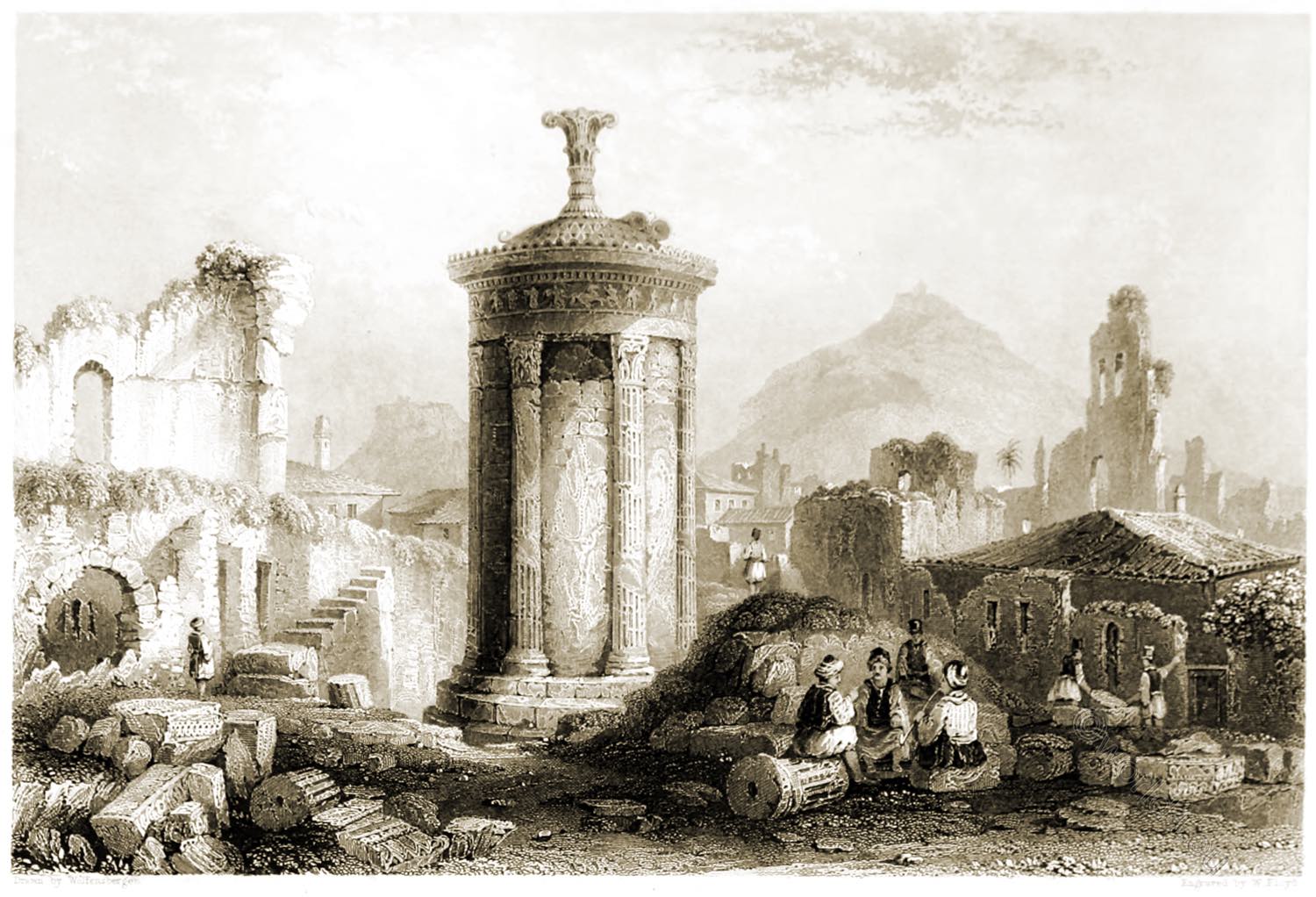
THE RHINE, ITALY, AND GREECE.
THE LANTERN OF DIOGENES; OR, CHORAGIC MONUMENT OF LYSICRATES.
ATHENS.
"Cold as the crags upon his native coast, His mind as barren and his heart as hard, Is he whose head conceived, whose hand prepared, Aught to displace Athena's poor remains." Byron. (Childe Harold's Pilgrimage - Canto II)
AN avenue that originates at the Odeum, and skirts the eastern base of the Acropolis, is still distinguished by the name of the “Street of Tripods.” This epithet was derived from a series of tripodal temples with which it was anciently adorned, on both sides, of which, however, one alone survives the ravages of time, and the mischievous propensities of travelers.
The Choragic monument of Lysicrates, which occupies the centre of the illustration, is now vulgarly designated by French geographers the Lantern of Diogenes, by others the Lantern of Demosthenes.
It is an exquisite little structure, of a circular form, adorned with six fluted Corinthian pillars, of white marble, and graceful proportions, sustaining an enriched frieze and cupola. The ornaments and bas reliefs of the frieze, which represented Bacchus punishing the Tyrrhenian pirates, were, in the year 1836, very wantonly destroyed by some English visiters, in their attempts to detach them, an object both foolish and disgraceful. Through the zeal of Lord Elgin, however, the designs had been preserved in casts, which he caused to be made from them, and which are now deposited in the British Museum.
The obscurity of the situation, the vast accumulation of ruins and of rubbish, which totally concealed the lower half of this beautiful little temple, led visitors to suppose that it was probably buried for ever: but the recovery of Grecian liberty has been attended with the renovation of ancient Athens, and the removal of the broken walls of an adjoining convent which overshadowed this locality, has revealed the Lantern of Diogenes to our admiration.
It was from the old Franciscan convent, which so long screened from view this unique and beautiful monument, that Lord Byron dated many of his Athenian letters. On the architraves of the Choragic testimonials, generally, were graven the names of the victors in each successful dramatic exhibition, as well as that of the archon or chief magistrate of the period; and, while these temples existed, the history of the Athenian drama possessed an indisputable verification of every fact which it asserts. “On their summits *) stood the tripods, that had been dedicated to Bacchus, the patron deity of the Athenian drama, by those persons who had defrayed the expense of a chorus to which a prize had been adjudged in the neighboring theatre, for the poetic and musical excellence of the drama to which it belonged (Wordsworth’s Greece)”.
*)This is extremely doubtful, it would rather appear that the tripod was preserved within the temple.
The design of the only remaining Choragic monument at Athens, has been borrowed by British architects; and we find the roof, beautifully carved into laurel leaves, elevated to the summit of many a temple of Christianity. In some instances defrauded of its fair proportions; but in one, “the cupola of St. Philip’s church, in Regent-street, London, accurately copied, and eminently beautiful.”
Choragi, to whom such monuments were dedicated, and perhaps by whom also they were erected, were persons chosen by the Athenian citizens to preside at, and to defray the cost of, the singers, dancers, and musicians, employed to celebrate the Dionysia or festivals of Bacchus. On these occasions tragedies and comedies were exhibited in the theatre, and hymns in honor of Bacchus, accompanied by the flute, chanted in the Odeum.
All the extravagant magnificence of the festival was at the expense of the Choragus. One of the ten tribes having chosen a Choragus, who must have attained the age of forty years, entrusted to his care and superintendence the preparation, instruction, and support of the musicians during the period of rehearsal, and during every other part of the details. On the festival day he appeared in a magnificent costume, and with a gilt crown on his head, attended by his tribe and by the most enthusiastic of his retainers.
Consecrated by religion, the functions of a Choragus were still farther ennobled by the example of Aristeides, Epaminondas, and the most illustrious characters of ancient Greece, who deemed it an honor to discharge them: so vast, however, was the cost of this gorgeous pageant, that many men declined the adoption of such a precarious path to the first office of the magistracy, by which a tribe was sometimes left without a conductor, in which case the State, not infrequently, defrayed the expense.
Violent contentions, attended by corruption and intrigue, were the means sometimes employed by the Choragi, and their adherents, to win the prize, which was generally a tripod; and men the most eminent for their virtues were appointed to be the judges. During the celebration of the festival, the persons of the Choragi, and of the actors, were declared to be sacred and inviolable.
If the victory were attended with glory, it was also accompanied with still further expenditure,—liberal disbursements amongst the people, and the erection of a Choragic temple in which the dedicated tripod was to be deposited. To these monuments the descendants of each Choragus appealed, with feelings of ostentation and pride, as an indisputable testimony of the wealth, and the virtues, of their ancestor, and of the eminent distinction which he had acquired amongst the most honored of the citizens of Athens.
Source: The Rhine, Italy, and Greece in a series of drawings from nature by George Newenham (1790?-1877). London: Fisher 1841.
Continuing

